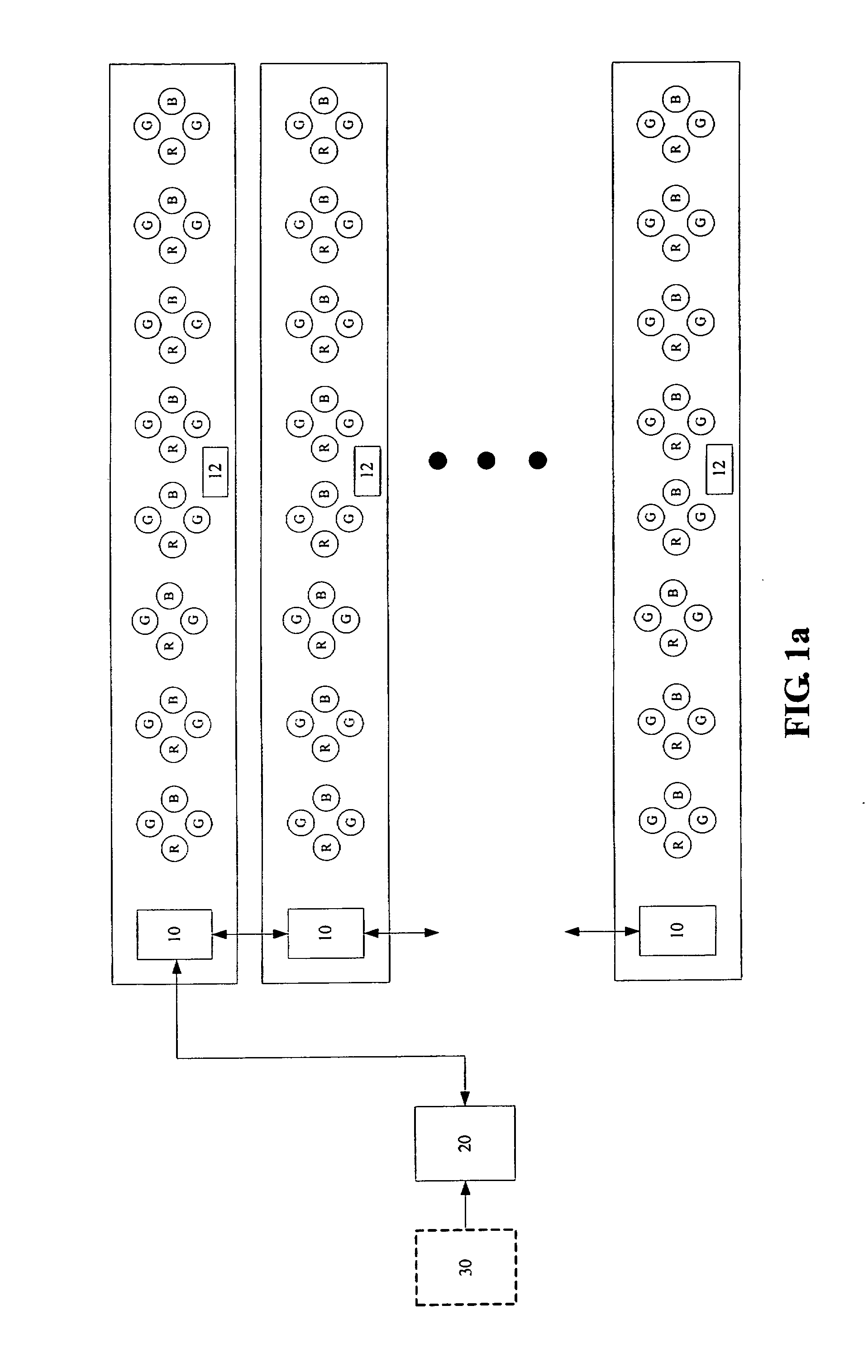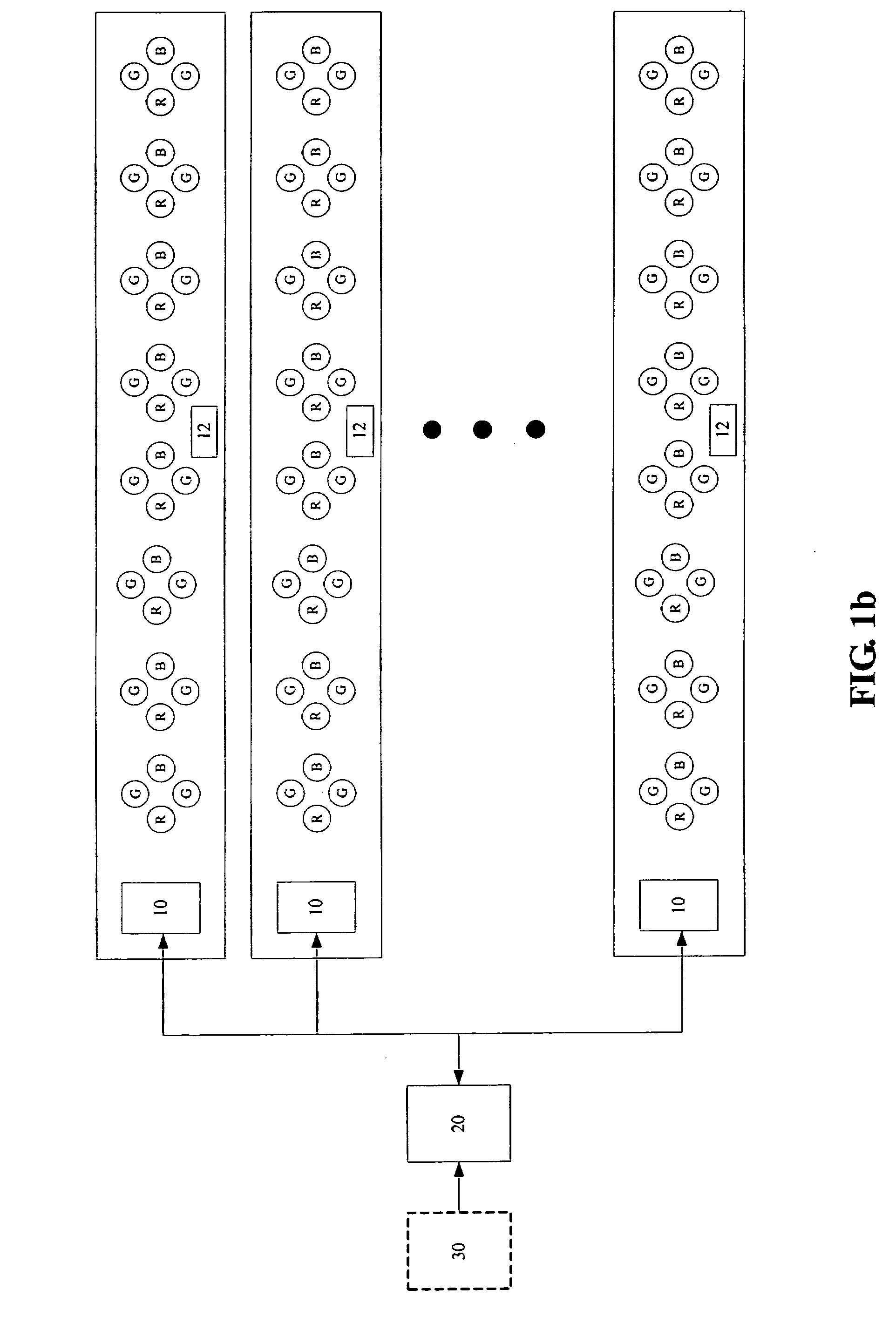Method for controlling LED-based backlight module
a backlight module and led-based technology, applied in the field of backlight modules, can solve the problems of notoriously inferior dynamic image display quality of lcds, and achieve the effect of lessening blur or flicker problems
- Summary
- Abstract
- Description
- Claims
- Application Information
AI Technical Summary
Benefits of technology
Problems solved by technology
Method used
Image
Examples
third embodiment
[0030]FIGS. 4a, 4b, 4c, and 4d are a number of variations according to the present invention. They are very similar to those variations of the previous embodiment shown in FIGS. 3b, 3c, 3d, and 3e, respectively. The only difference lies in that, in FIGS. 4a, 4b, 4c, and 4d, driver control signals having asymmetric cycles are employed. As such, all odd-numbered or even-numbered lines are lighted for a period of time longer than when they are darkened; or all odd-numbered or even-numbered lines are darkened for a period of time longer than when they are lighted. Please note that, for this embodiment, it is possible to have all lines lighted or darkened at certain times. Please refer to the previous embodiment for details.
[0031]FIG. 5a is the driver control signal waveform diagram according to a fourth embodiment of the present invention. The present embodiment is actually an integration of the first embodiment (shown in FIGS. 2a, 2b, 2c) together with the gradual increase and decrease...
fifth embodiment
[0032] The previous embodiments all achieve a certain scanning effect for the LED-based, direct-lit backlight module. In other words, the lines of LEDs of the backlight module exhibit a line-by-line lighting (or darkening) behavior in a frame time in accordance with the scanning of the LCD device. FIG. 6a is the driver control signal waveform diagram according to the present invention, which exhibits a different behavior. In the present embodiment, the lines of LEDs are driven simultaneously by a driver control signal whose frequency is a multiple integral of the frame rate (e.g., 120 Hz, 180 Hz, and 240 Hz). In other words, the backlight module is actually “flashed” instead of “scanned.” Similarly, the duty cycle of the driver control signal can be adjusted (shown by the dashed line) for brightness control. FIGS. 6b and 6c are two variation of FIG. 6a, where the signal cycles are symmetric (in FIG. 6b) or asymmetric (in FIG. 6c).
PUM
 Login to View More
Login to View More Abstract
Description
Claims
Application Information
 Login to View More
Login to View More - R&D
- Intellectual Property
- Life Sciences
- Materials
- Tech Scout
- Unparalleled Data Quality
- Higher Quality Content
- 60% Fewer Hallucinations
Browse by: Latest US Patents, China's latest patents, Technical Efficacy Thesaurus, Application Domain, Technology Topic, Popular Technical Reports.
© 2025 PatSnap. All rights reserved.Legal|Privacy policy|Modern Slavery Act Transparency Statement|Sitemap|About US| Contact US: help@patsnap.com



